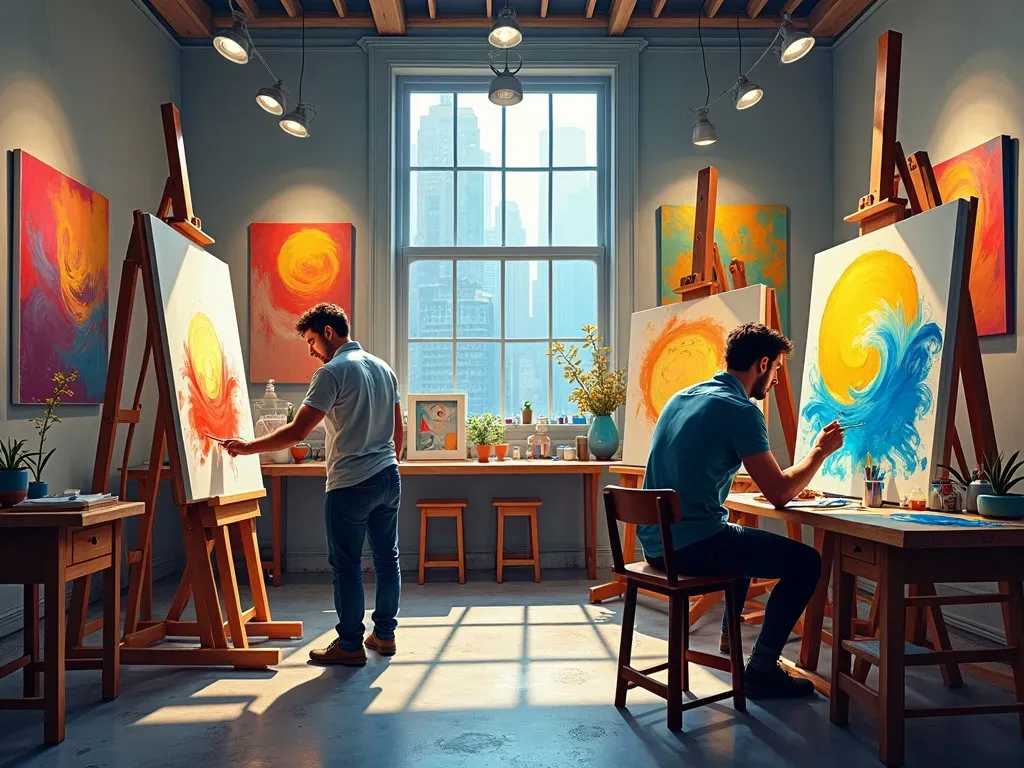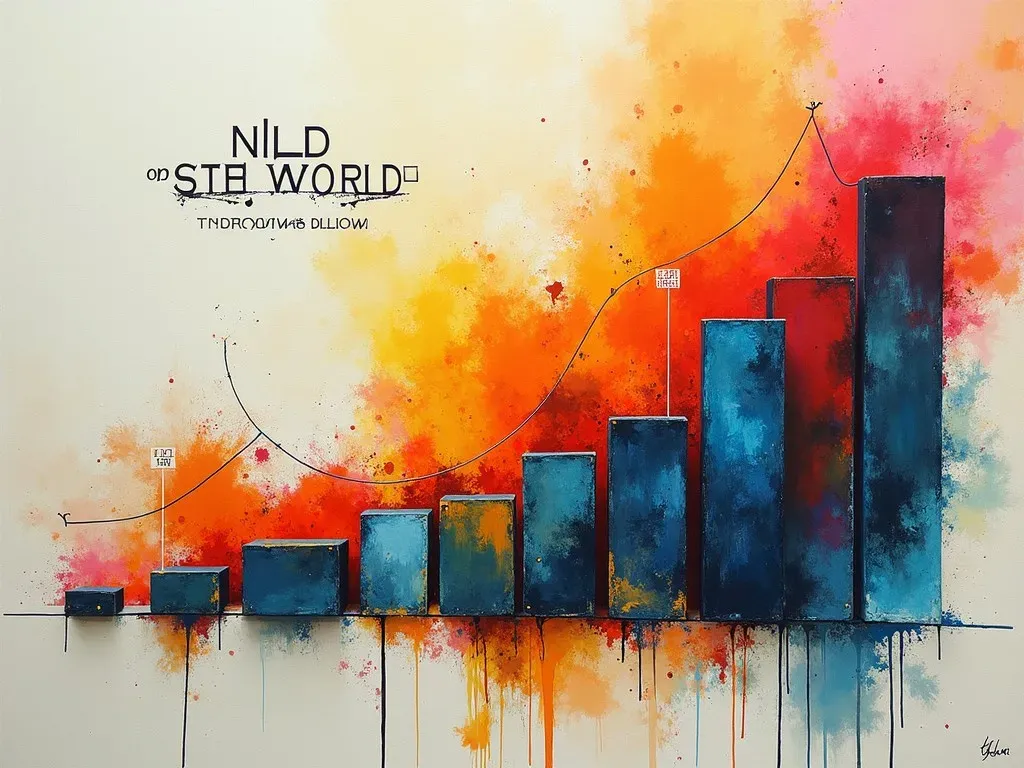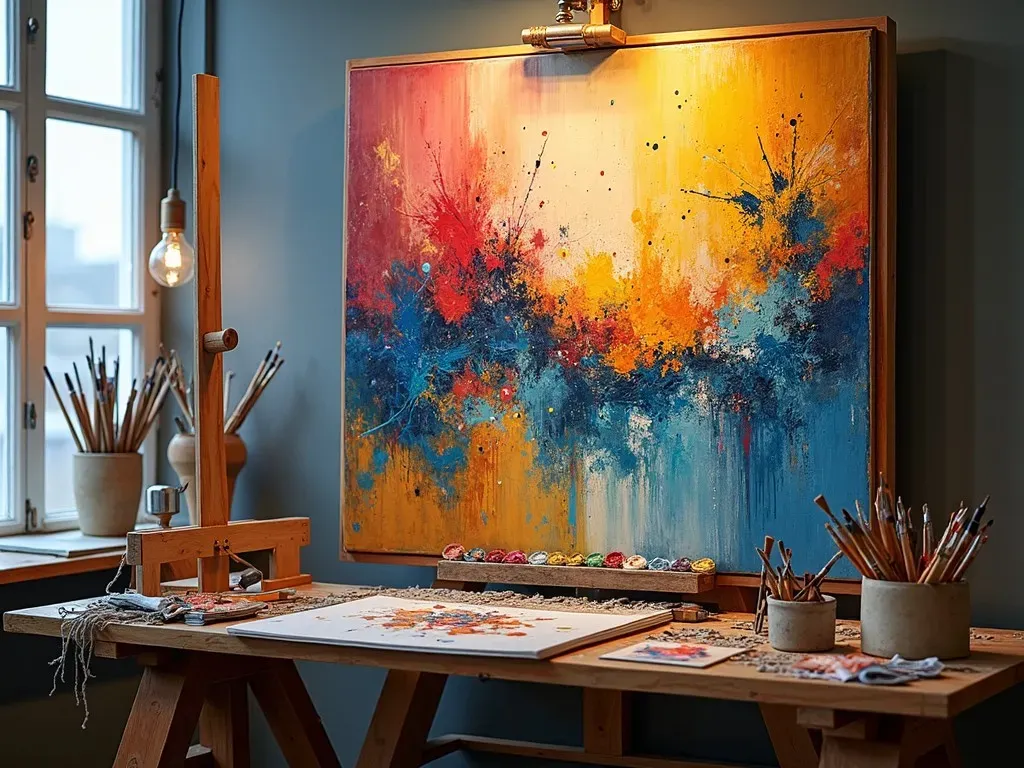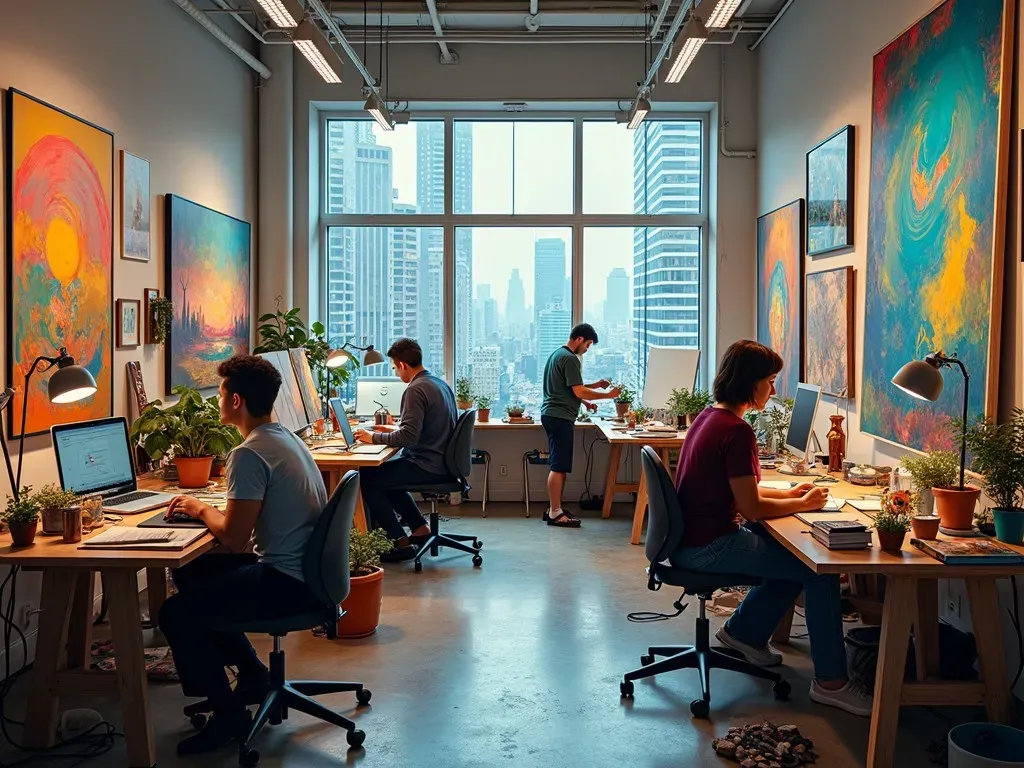Keyword: fine art painters
Fine art painters are artists who possess unique abilities to create visually stimulating works through the application of various mediums, styles, and Techniques. Their works can evoke emotions, provoke thought, and even challenge societal norms. These painters create pieces that often reflect personal experiences, societal commentary, and expressions of imagination, resulting in masterpieces that can ascend in value over time, becoming sought-after collectibles in the fine art market.
Throughout history, fine art painters have made significant contributions to the arts, shaping cultural movements and periods. Some of these influential figures include Vincent van Gogh, Pablo Picasso, claude monet, and Mary Cassatt, each renowned for their distinct styles and contributions to the world of fine art. Their works are often showcased in galleries, auctioned in prestigious art markets, and celebrated in exhibitions worldwide.
Evolution of Fine Art Painting
Historical Overview
From cave paintings to the contemporary art movement, the evolution of fine art painting has been marked by substantial changes in techniques, materials, and philosophical approaches. Below is a timeline highlighting key historical periods and styles in fine art painting:
| Period | Key Characteristics | Famous Artists |
|---|---|---|
| Prehistoric Art | Cave paintings; the use of natural pigments | Unknown |
| Classical Era | Emphasis on realism and humanism; use of perspective | Michelangelo, Raphael |
| Renaissance | Flourished in Italy; focus on human experience | Leonardo da Vinci, Titian |
| Baroque | Dramatic expressions; use of light and shadow | Rembrandt, Caravaggio |
| Romanticism | Emphasized nature and emotion | J.M.W. Turner, Eugène Delacroix |
| Impressionism | Focus on light and color; loose brushwork | Claude Monet, Édouard Manet |
| Abstract Expressionism | Non-representational; focus on the act of painting itself | Jackson Pollock, Mark Rothko |
| Contemporary Art | Diverse styles; often incorporates technology and multimedia | Banksy, Ai Weiwei |
Iconic Fine Art Painters
-
Vincent van Gogh: Known for his emotive use of color and expressive brushwork, his post-impressionist paintings like "Starry Night" and "Sunflowers" continue to captivate audiences.
-
Pablo Picasso: A pioneer of the Cubist movement, Picasso’s innovative style broke traditional forms and laid the groundwork for modern art. His famous works include "Guernica" and "Les Demoiselles d’Avignon."
-
Claude Monet: A leading figure in the Impressionist movement, Monet’s focus on light and atmosphere can be seen in his series like "Water Lilies" and "Impression, Sunrise."
-
Mary Cassatt: An American painter known for her intimate portrayals of women and children, she played a significant role in the Impressionist movement alongside her male counterparts.

The Fine Art Market Today
The market for fine art paintings is flourishing, characterized by auctions and the sale of original pieces at record-breaking prices. According to a report by Artnet, global art sales reached approximately $65.1 billion in 2022, with auction sales accounting for nearly half of that total.
Trends in Art Sales
-
Online Art Marketplaces: Platforms like Saatchi Art, Artsy, and ArtNet have transformed how fine art is bought and sold, making it more accessible to collectors around the globe.
-
Value of Fine Art: The value of fine art pieces can vary significantly based on the artist’s reputation, the medium used, and historical significance. Often, modern and contemporary works fetch higher bids at auctions.
-
Investing in Art: Many investors view fine art as an alternative asset, appreciating its potential for value appreciation over time. Notable sales include high-profile auctions where works by famous painters have sold for tens of millions of dollars.
Current Market Statistics
| Category | 2018 | 2019 | 2020 | 2021 | 2022 |
|---|---|---|---|---|---|
| Total Sales Worldwide | $67.4 billion | $64.1 billion | $50.1 billion | $67.8 billion | $65.1 billion |
| Online Art Sales | $6.2 billion | $9.2 billion | $12.4 billion | $17.3 billion | $12 billion |
(Refer to Artnet for comprehensive market analyses)

Collecting Fine Art Paintings
How to Start Your Collection
Starting a fine art collection is an exciting venture that involves research, patience, and a keen eye for talent. Here are some steps to guide new collectors:
-
Identify Your Style: Understand the genres you are drawn to, whether it’s abstract, realism, or modern art.
-
Set a Budget: Determine how much you are willing to spend. Fine art can range from affordable prints to multi-million dollar originals.
-
Research Artists: Look into emerging artists and established ones. Attend exhibitions, auctions, and galleries to gain insights into their works.
-
Buy Original Art: Consider purchasing original pieces as they hold more value than reproductions.
-
Stay Informed: Follow market trends and read about past auction results to understand values and demand.
Frequently Asked Questions about Fine Art Painters
Q1: What defines a fine art painter?
A fine art painter is someone who creates art primarily for aesthetic purposes rather than functionality, often exploring personal or societal themes through various painting techniques.
Q2: How can I find renowned fine art painters?
You can discover celebrated fine art painters through museum collections, online art marketplaces, and art fairs. Websites like Art Brokerage and Saatchi Art provide listings and sales of fine art.
Q3: Are there fine art painters who focus on specific themes?
Yes, many fine art painters delve into specific themes such as nature, identity, social issues, or abstract concepts. This thematic focus can define their unique style.
Q4: What is the difference between original art and prints?
Original art refers to works created directly by the artist, often one-of-a-kind items, while prints are reproductions made from the original, typically produced in multiple copies.

Q5: Can I invest in fine art?
Investing in fine art is possible, but it requires knowledge of the market and an understanding of the value of artworks. Consider consulting art advisors or galleries for guidance.
The Future of Fine Art Painters
The future of fine art painting is set to evolve, integrating technology and new mediums that can redefine traditional practices. Artists may increasingly utilize digital tools, virtual reality, and AI to create and display their works, which could further democratize art appreciation and collection. Advanced art authentication technologies are also on the rise, helping collectors ensure the legitimacy of their acquisitions.
In conclusion, fine art painters continue to shape the landscape of culture and creativity. Each stroke of their brush tells a story, challenging the human experience and enriching the world through their artistic endeavors.

By exploring the diverse field of fine art painters, one not only appreciates individual creativity but also engages with the broader narratives that art tells about society, history, and human emotions. Dive into the world of fine art today to discover, collect, and appreciate the extraordinary talent that defines this unique form of expression.
